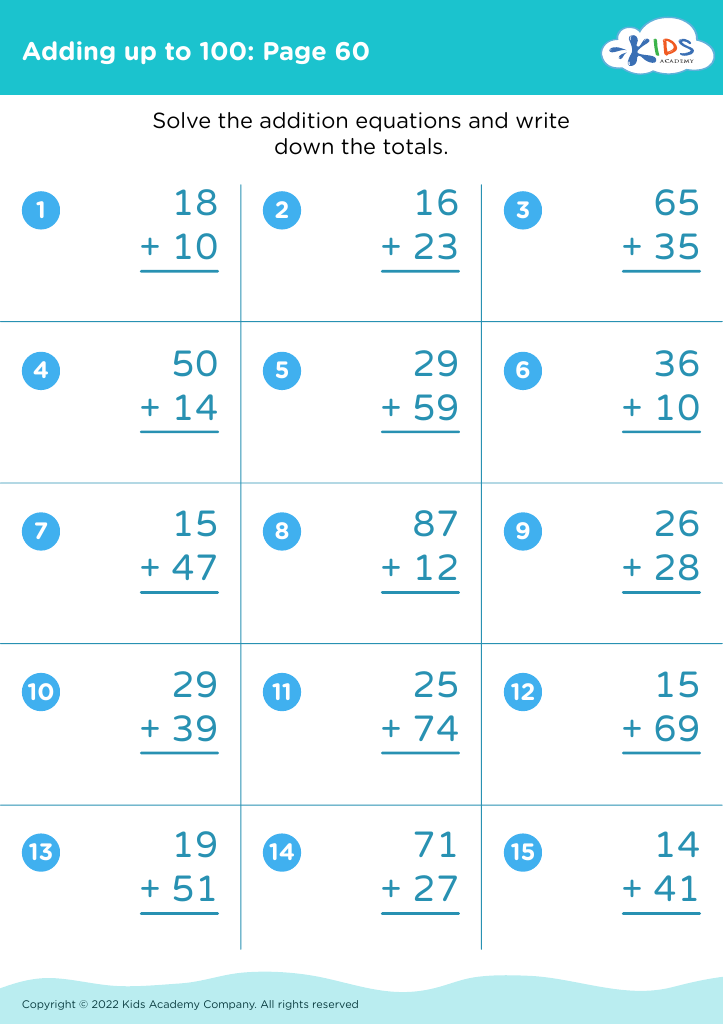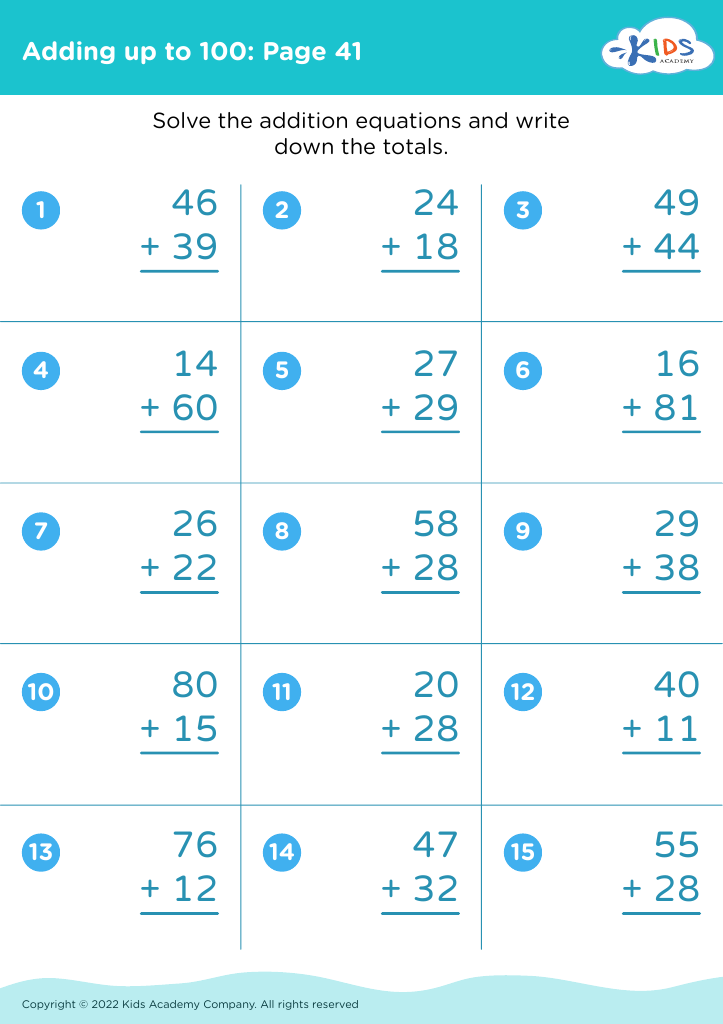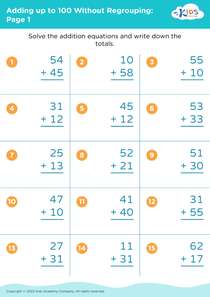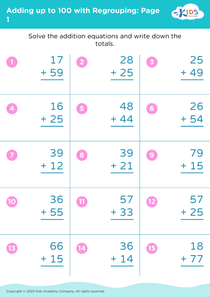Recognizing Patterns Adding up to 100 Misc Worksheets for Ages 5-7
3 filtered results
-
From - To
Explore our "Recognizing Patterns Adding Up to 100 Misc Worksheets" designed specifically for children ages 5-7! These engaging worksheets help young learners develop essential math skills while fostering their ability to recognize patterns in numbers. Through a variety of fun activities, students will practice addition and enhance their pattern recognition, all while building a solid foundation for future math success. Each worksheet encourages interactive learning, keeping children motivated and enthusiastic about math. Equip your child with the tools they need to master adding up to 100 in a playful way! Start your child's math journey today with our printable resources!
Recognizing patterns, especially in the context of adding up to 100, is a crucial skill for children aged 5-7. Understanding patterns helps young learners develop their mathematical reasoning, critical thinking, and problem-solving skills. When children identify and work with patterns, they improve their ability to predict outcomes, make connections between numbers, and foster a deeper understanding of addition and subsequent mathematical concepts.
Moreover, recognizing number patterns, such as those that sum to 100, not only reinforces their arithmetic skills but also enhances their confidence in handling larger numbers. This foundational knowledge paves the way for more complex mathematical concepts in later grades, making it an essential building block of their education.
Engaging with patterns also supports cognitive development. It encourages curiosity and exploration, allowing children to express their mathematical ideas in inventive ways. Parents and educators play a vital role in nurturing these skills through interactive activities, discussions, and games. By focusing on recognizing patterns, they are not only investing in their children’s immediate learning but also preparing them for future success in mathematics and other subjects across a broad curriculum. Investing time in these early years ultimately lays a strong foundation for lifelong learning and critical skills.














